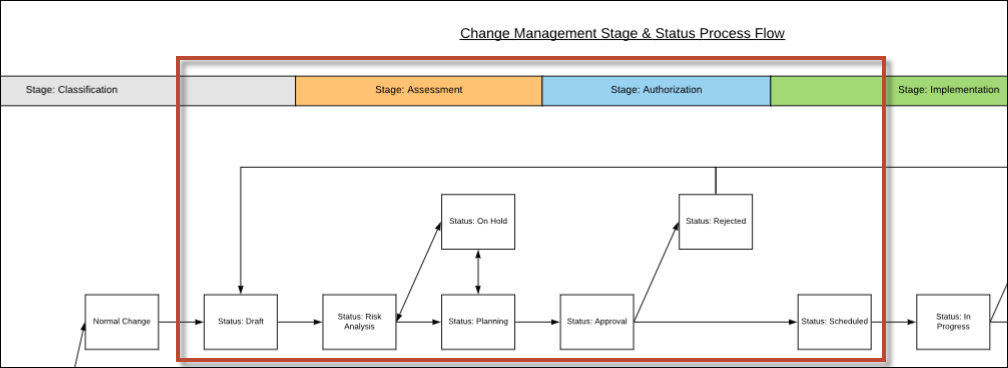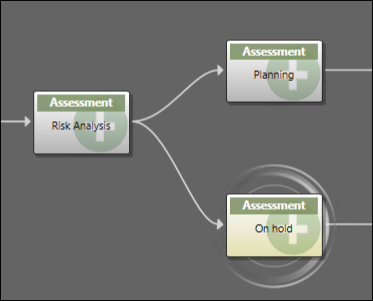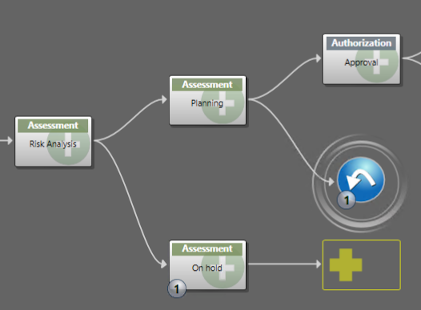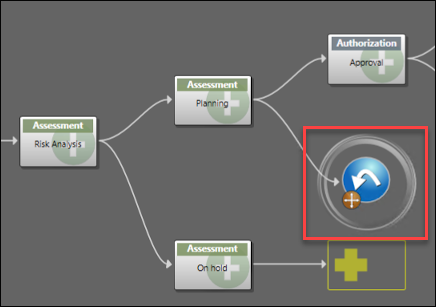Use branches and jumps to customize your Business Object
lifecycle.
Use branches to add divergent routes to your lifecycle. For example,
for a Change Request lifecycle, you could have a branch for a Normal Change,
another for an Emergency Change, and another for a Standard Change. Jumps allow
you to go backwards through your lifecycle (example: if something is rejected
or to reopen a Closed ticket.), skip ahead, jump to another, or to close off a
lifecycle. In practice, branches give the users a choice of where to go next
when using the Transition Status Control (example: Reject or Approve).
Note: All branches need to be in one workflow. For example, if you want
your users to choose between the three types of Change Request when they create
a new Change Request, you cannot have three separate lifecycles for Normal
Change Requests, Standard Change Requests, and Emergency Change Requests.
The following steps refer to example statuses from the image below. To
see all the steps to replicate the section of this lifecycle marked by the red
line, see
Example: Create a Lifecycle.

To add a branch to a
lifecycle:
- Open an existing lifecycle in
the Lifecycle Editor.
- Drag a status on top of an existing status (example: Risk
Analysis).
A branch appears as shown below. Here, it has been named as
status
On hold.

Note: When you add branches, the transition information is added for
you. In this example, there are transitions added for
Risk Analysis -> Planning and
Risk Analysis -> On hold.
To replicate the two-way arrows shown on the
workflow above, for example, between statuses
Risk Analysis
and
On hold, you need to use a jump.
To add a jump to a lifecycle:
- Drag a jump on to your lifecycle and drop it on to your source
status (example:
Planning).
- Then drag the brown cross onto your destination status, in this
case,
On hold.

There is now a jump or two way arrow between the statuses
Planning and
On hold. You can tell which statuses are
joined together by a jump by matching up the pairs of jump numbers.
Tip: If you add multiple jumps which go to the same
destination they all have the same jump number.
- Select
Save on the toolbar (or select
Ctrl+S) to save your lifecycle while working.
Select
OK at the end when editing is complete and you
want to save your lifecycle and close the Lifecycle Editor.
If not valid, you are not allowed to save and are asked to
fix the issues. See
Validate a Lifecycle.
- Publish
the Blueprint
() to commit the changes, or
save the
Blueprint () to continue making other changes.



